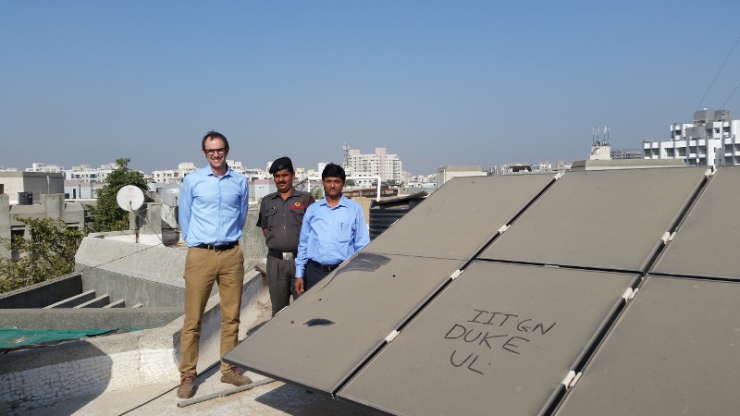Besides being a major environmental risk to health, air pollution could be a serious threat to the solar industry as well. Looking into the losses caused by accumulation of airborne particles on solar panels, a group of researchers has found that energy output may be reduced by over 25%.
Although the percentage differed in various regions, it was determined that those investing the most in solar energy installations – China, India and many nations in the MENA region – are hit the hardest. Namely, assuming monthly cleanings, the losses in arid regions such as the Arabian Peninsula, Northern India and Eastern China range between 17% and 25% or more. If cleaning takes place every two months, those numbers jump to 25% or 35%.
In addition to measuring the decrease in IITGN’s solar panels output as they became dirtier over time, the researchers found that they showed a 50% jump in efficiency each time they were cleaned after several weeks.
Moreover, they analyzed the composition of the grime collected from the panels, revealing that 92% was dust while the remaining fraction was composed of carbon and ion pollutants from human activity. However, light is blocked much more ‘effectively’ by man-made particles.
“The man-made particles are also small and sticky, making them much more difficult to clean off,” said Michael Bergin, professor of civil and environmental engineering at Duke University and lead author of the study. “You might think you could just clean the solar panels more often, but the more you clean them, the higher your risk of damaging them.”
Popular content
The Arabian Peninsula loses much more solar power to dust than to manmade pollutants, Bergin said, adding that the reverse is true for regions of China, and regions of India are not far behind.
“China is already looking at tens of billions of dollars being lost each year, with more than 80% of that coming from losses due to pollution,” said Bergin. “With the explosion of renewables taking place in China and their recent commitment to expanding their solar power capacity, that number is only going to go up.”
“We always knew these pollutants were bad for human health and climate change, but now we've shown how bad they are for solar energy as well,” continued Bergin. “It's yet another reason for policymakers worldwide to adopt emissions controls.”
This content is protected by copyright and may not be reused. If you want to cooperate with us and would like to reuse some of our content, please contact: editors@pv-magazine.com.



While we found appr. only 1-2% reduction even near to dust polluters (stone quarry) we also found 25% of power loss at farm rooftops- polluted by gas emissions of cattle, their food and the emissions of a biogas facility nearby. These numbers are all measured in the same Lab in Germany and refer to STC indoort measurements of modules taken out as samples.
Most of the systems in Germany therefore need no or seldom cleaning, but that`s of course our weather with “No rain periods” no longer then max. 2 weeks (ok, most of the time one week or less).
Geoengineering is partly to blame as well – emissions from aircraft that spread out into a thin veil to “block” UV radiation (which is now coming in as UVA and B). Geoengineering products include aluminum, barium and strontium; these stay in the atmosphere a few hours then fall to the earth, and will accumulate everywhere – including rivers, oceans, streams and rooftop solar panels. (We and all life forms are breathing in this nasty stuff as well.) We have no access to our panels so can’t clean them – this is typical in the US; another reason to stop the geoengineering projects. The particulates from these usually military or contracted aircraft interact with the ozone layer and hasten its breakdown. Many nations around the world participating now in geo/climate engineering (US has being doing it for decades) with the dubious hope of curtailing global warming – but that isn’t happening.